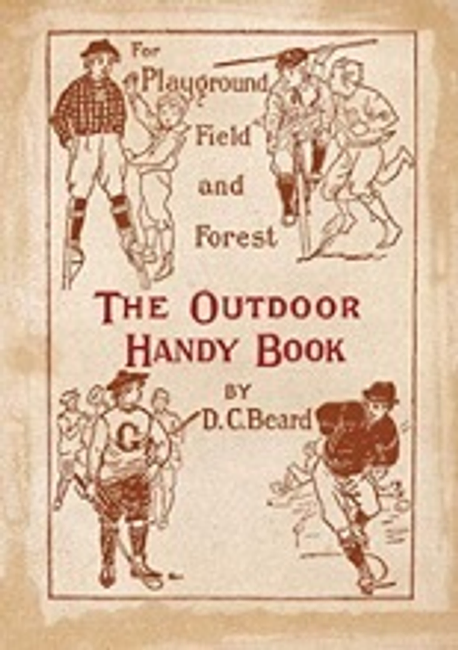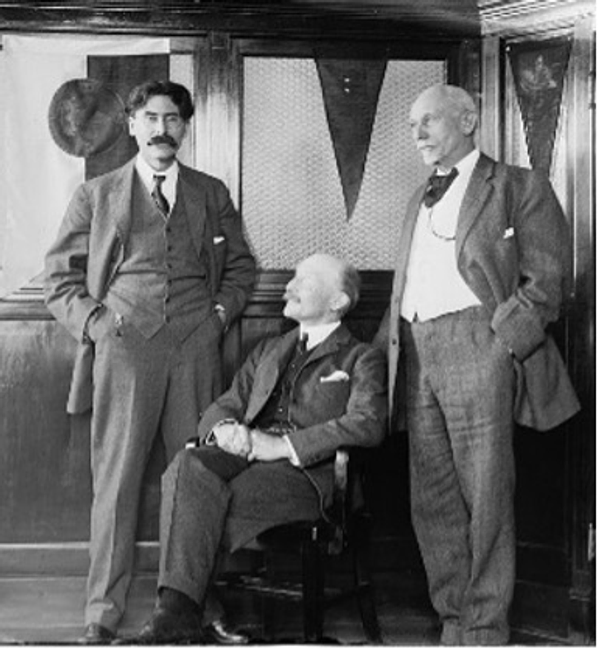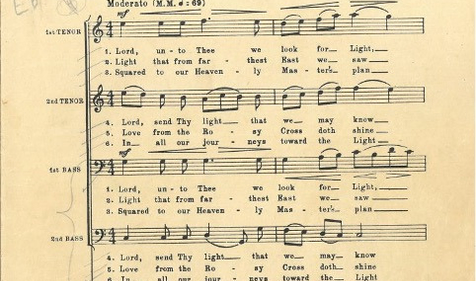Daniel Carter Beard was an author, Freemason, and founding father of the American Scouting movement.
In June 2001 during the Quarterly Communication of the Grand Lodge of Pennsylvania, the Grand Master approved the creation of the Daniel Carter Beard Masonic Scouter Award. Created in conjunction with the Boy Scouts of America, the namesake of this honor, Daniel Carter “Uncle” Beard played a pivotal role in pioneering the American Scouting movement. What’s more, he instilled Masonic principles into the Boy Scouts of America (BSA), forever linking the two organizations in ideals.
Bro. Beard, who was an author and illustrator in addition to his youth leadership, was raised to the sublime degree of Master Mason in Mariners Lodge No. 67 in New York City, and later affiliated with Cornucopia Lodge 563 in Flushing, New York. His contributions to our fraternity and the youth of the United States earned him a worthy place in the history of our Brotherhood.
Early Life and Career
Daniel Carter Beard was born on June 21, 1850, in Cincinnati, Ohio. His parents, Mary Caroline Beard and James Henry Beard surrounded him with art from a young age. His uncle, William Holbrook Beard, was also an artist who lived nearby in Covington, Kentucky. It was from William that Daniel learned of pioneering and life on the frontier.
Daniel spent his childhood exploring and sketching the woods in Painesville, Ohio, cementing his love for nature and illustration. After working for a time as an engineer and surveyor, he attended art school in New York City. While living in New York, he began his career as a writer, contributing a series of articles to St. Nicholas Magazine.
Writing and Illustrations
In 1882, Beard used those articles as the foundational text of The American Boy's Handy Book. This handbook
of scouting activities for boys included instructions and illustrations for activities ranging from kite flying and fishing to taxidermy and boat building. The next year, a fortuitous meeting occurred after Beard joined the Student Art League. It was here he became friends with Ernest Thompson Seton, one of the future founders of the Scouting movement. Together these men were hugely influential in popularizing scouting in the United States.

Beard’s writing and artistry picked up during the 1890s after he joined Henry George's Single-tax movement. As an advocate of Georgist philosophy, he published several novels about the subject, including Moonlight and Six Feet of Romance. During the late 1880s, he was introduced to fellow author and Freemason Mark Twain. Beard created the illustrations for A Connecticut Yankee in King Arthur’s Court (a Georgist interpretation of the fairytale). It was the first of several literary illustrations he completed for books by Mark Twain and other authors such as Ernest Crosby.
The Scouting Movement
Brother Beard's interest in the outdoors remained strong, and he published The Outdoor Handy Book in 1896. Fittingly, he took a position as the editor of Recreation Magazine, which was founded by his friend George O. Shields. Beard wrote a monthly column geared at youth, further establishing him as a thought leader in scouting. He was also a member of the Camp-Fire Club of America, which brought together those interested in wildlife conservation and outdoor recreation.

With his monthly column, he was able to begin promoting the Sons of Daniel Boone, a male youth activities program that he established in 1905. During his time working as a civil engineer in Cincinnati and later in New York, Beard regularly encountered inner-city boys and the plights that followed them through life. He formed this youth program and based its activities on American frontier traditions, hoping it would present boys with new opportunities and the chance to develop valuable skills.
Beard began writing for Woman's Home Companion (WHC) in 1906 before moving to Pictorial Review in 1909. However, WHC owned the rights to the Sons of Daniel Boone, forcing Beard to rebrand the program to Boy Pioneers of America. The following year, the program merged with what became the Boy Scouts of America, and he soon helped his sister organize the Camp Fire Girls program.

The Boy Scouts of America
Soon after uniting these youth organizations, Beard created some of the most recognizable elements of Scouts, including the badge and uniform. He also wrote and illustrated early publications of the Boy Scouts of America, taking the principles and lessons he learned as a Freemason and weaving them throughout the Scouting program. Notably, the mission statement of the BSA was to "teach [boys] patriotism, courage, self-reliance, and kindred values."

Beard was among the first National Scout commissioners and served the organization for 30 years. He later became the editor of the organization's official magazine: Boys' Life. Members respected Daniel's passion for helping the youth and his love of scouting. He founded Boy Scout Troop 1 in Flushing, New York, which is believed to be one of the oldest continuously chartered Boy Scout Troops in the United States. He became an Eagle Scout at the age of 64 in 1915. For all his contributions to the organization and youth of America, he became known affectionately as "Uncle Dan" by millions of Scouts.
In the century-plus since it was formed, it is estimated that 110 million Americans participated in BSA. During its peak in 1973, the program had over 4 million active members. And while its popularity has waned somewhat, BSA remains the largest scouting organization and one of the largest youth organizations in the United States. As recently as 2021, BSA still had approximately 1.2 million youth participants and about one million adult volunteers.
Later Years and Death
With no use left for his original "Sons of Daniel Boone" program, Dan Beard lent it to the Culver Academies' summer camp program and worked with the group for many years. It remains in use at the Academies’ Culver Woodcraft Camp to this day.
Beard died on June 11, 1941, at his home, The Brooklands, in Suffern, New York, and was buried near his home at the Brick Church Cemetery in Spring Valley. It is estimated that 2,000 people lined his funeral route - an apt illustration of the mark he left on communities across the United States. Fittingly, more than 100 Boy Scouts formed an honor guard and assisted with traffic control for the ceremony.
A Masonic Legacy
Beard lived his life committed to helping others and upholding our sacred Masonic principles. For that reason, the Daniel Carter Beard Masonic Scouter Award was created. Since the BSA was founded, countless Freemasons have volunteered and served as role models for its members. The Daniel Carter Beard Masonic Award acknowledges the connection between Freemasonry and the man who galvanized Scouting in America while celebrating the integrity of the Freemason who is honored by receiving the award. Today, Grand Lodges across the country allow members to nominate deserving Masons for this award.
In addition to the Masonic Scouter Award, Beard has been honored in many ways beyond Freemasonry. These include:
- The Daniel Carter Beard Bridge crosses the Ohio River in Cincinnati, Ohio
- A life-size bronze statue of Daniel Carter Beard and a Boy Scout in Covington, Kentucky
- The Daniel Carter Beard Boyhood Home was made a National Historic Landmark
- Alaska's Mount Dan Beard is a 10,082-foot peak in the Alaska Range in Denali National Park and Preserve
Today, many Boy Scout camps are named after Brother Dan Beard, and every year on February 8, local Scouts place a wreath on his grave at the Brick Church Cemetery. His generous and adventurous spirit has, directly and indirectly, touched countless lives, from the young men learning leadership and survival skills to the scout leaders and Masons working to build them into men of integrity.
If you’re a Mason interested in getting involved with BSA, or would like to rally your local Brethren to support the BSA, visit the National Association of Masonic Scouters website.
Related Stories
Discover additional Scottish Rite blogs and news on this topic.



